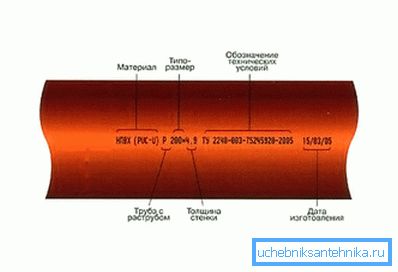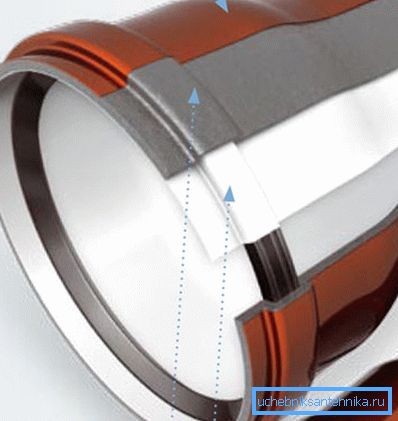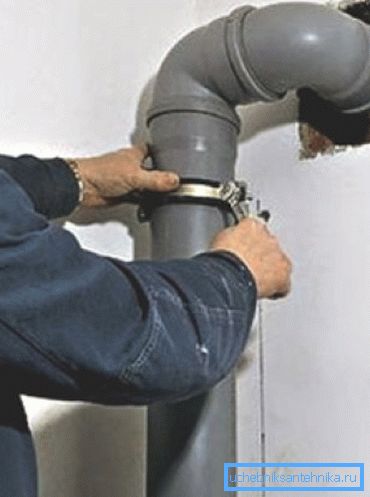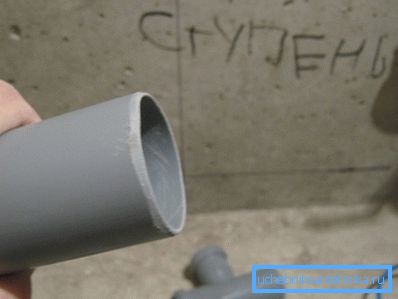Npvh pipe: regulatory documents and application features
What should be the pipe NPVH according to GOST R 51613-2000? Where are these pipes used? How are they mounted? Does the material have any features that should be considered during installation? Let's try to find answers.

We study GOST
Surprise surprise
We are accustomed to the fact that when installing plumbing fixtures, pipes from NPVH (unplasticized polyvinyl chloride) are used mainly as sewage pipes. At the same time, the sewage system, which is internal and external, is mostly self-flowing.
The study of regulatory documents will bring us an unexpected discovery: GOST R 51613-2000 is the only state standard by which PVC pipes are manufactured. Moreover, any pipe manufactured in accordance with it is a pressure pipe.
By the way: of course, there are no obstacles to the use of pressure pipes when laying free-flow sewage. The only thing that can confuse a potential customer or buyer is the excessive thickness of the walls and, accordingly, not the most modest price.
Requirements
The field of application formulated by the standard looks rather vague: the products are intended for transporting water, including drinking water, and other liquid and gaseous substances. Obviously, there are no obstacles to the use of pipes when laying sewers.
So, what rules should sewage PVC pipe meet?
- The working temperature range is only from 0 to +45 degrees. Stop, the confusion has already begun. Why, then, does a pipe store have a much wider range of temperatures? Keyword - pressure head. With increased pressure, the plastic becomes more brittle in the cold and ductile when heated.
- The following options for the manufacture of pipes:
- Without socket.
- With a socket for adhesive bonding.
- With a bell under the rubber ring seal. At assembly of free-flow sewer sewage systems, as a rule, such method of connection is used.

- The nominal diameter stipulated by the standard can be from 10 to 315 mm with a wall thickness of 1.5 - 23.2 mm. Each standard size corresponds to several variants of SDR (standard dimensional relationship). The smaller the SDR (it is calculated as a fraction with a diameter in the numerator and a wall thickness in the denominator), the greater the working pressure of the discharge pipe.

We give the dependence of the maximum working pressure on the wall thickness and SDR at the most popular for sewage system with a nominal diameter of 110 mm:
| Wall thickness mm | SDR | MOP (maximum working pressure), MPa |
| 2.7 | 41 | 0.63 |
| 3.4 | 33 | 0.8 |
| 4.2 | 26 | 1.0 |
| 5.3 | 21 | 1.25 |
| 6,6 | 17 | 1.6 |
| 8.1 | 13.6 | 2.0 |
- Products are made in lengths of at least 4 and no more than 12 meters.
By the way: as agreed with the customer, the length can be reduced or (if the problem of transportation is resolved) is increased.
How are PVC-U sewer pressure pipes and other PVC pipes marked?
The designation must contain:
- Word trumpet;
- The material from which it is produced (PVC-100 for polyvinyl chloride, designed for the maximum stress in the pipe walls of 10 MPa, and PVC-125 125 for 12.5 MPa);
- Type of socket (in his absence - not indicated);
- SDR;
- Dash;
- Nominal diameter;
- Wall thickness;
- Appointment (drinking or technical);
- The name of the standard.
Thus, the pipe with marking NPVH 125 R SDR17 225x13.4 drinking GOST R 51613-2000 is a product designed for the maximum stress in the walls of 12.5 MPa; fitted with a bell under the rubber seal; having a ratio of diameter to wall thickness of 17, with a diameter of 225 and a wall thickness of 13.4 mm; intended for drinking water.

Special features
What should be considered when laying the sewage with your own hands using PVC pipes and fittings?
PVC is a rather fragile material. Pipes should not be installed with tension and bends; strong blows in the process of work are also unacceptable.
Unlike cast iron, PVC skips and even amplifies sounds. Drain water from the toilet to the top of the neighbors will be well heard in the night silence. Part of the problem is solved in the so-called silent sewage system: the multi-layer structure and the increased wall thickness quench the noise well.

Resistance to high temperatures is limited even in self-flowing sewers. When flushing radiators in harsh winters, when the temperature of the coolant reaches the maximum stipulated by SNiP 95C, it is better not to discharge water from the radiator into the plastic sewer riser.
Tip: if you have nowhere to reset it anymore, a simple trick will help. Direct the jet into the bath and turn on the cold water. The mixture that falls into the sewage system will have a safe temperature.
What else can you advise plumbing fixer for PVC?
- When installing risers, pipes and compensating pipes must be fixed with collars under the neck. The alternative is to seal the socket in the ceiling.

- When assembling the socket connections, it is necessary to apply a strip of silicone sealant to the inner surface of the socket in front of the sealant.. The instruction is related to the fact that the rubber dries out over time and loses its elasticity; sealant will prevent leaks.
- Horizontal sections are fixed with suspensions or clamps with a step of no more than 10 diameters: 50 cm for a 50-mm pipe, and so on. With a larger step, the pipe may sag in 2-3 years, creating sections with a counter-slope.
- Cutting plastic is better with a hacksaw or grinder with any cutting wheel. A hacksaw with large teeth will leave rough burrs, and with carelessness it can split the cutting edge.
- Before you insert a pipe that has been cut in place into the socket, be sure to remove the chamfer from the inside and outside.. This will reduce the effort required for assembly and prevent blockage in the future.

Conclusion
We hope that our recommendations will help the reader in choosing and self-installation of sanitary equipment. As usual, additional information can be found in the video in this article. Successes!